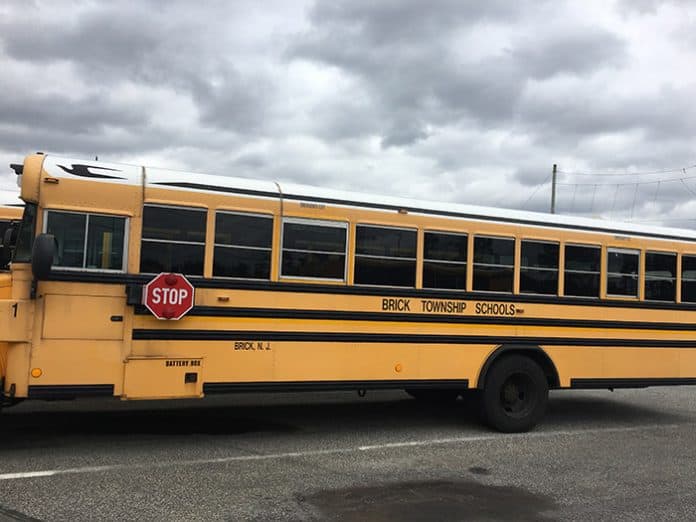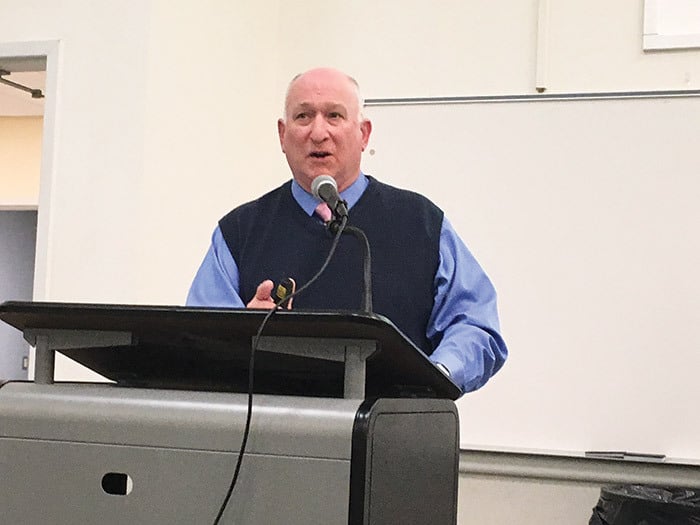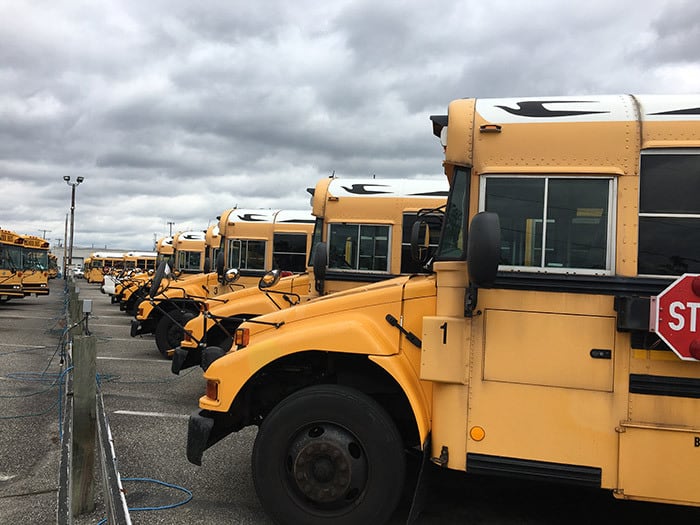
BRICK – It is a formidable task transporting 9,627 township students back and forth to school each day, but the task is much more complex than simply picking kids up at their bus stop and taking them to their local school.
Brick School’s supervisor of pupil transportation Don Wilson explained the dizzying balancing act of the 114 buses of varying sizes, which includes busing 1,034 Brick students who have special transportation needs.
Besides the in-district special needs students, there are an additional 128 children who attend special schools that are located in other towns.
“There are some children that, unfortunately, we don’t have the programs to handle them in-district, so they need to be transported to other schools,” Wilson said at a recent Board of Education meeting.

Smaller buses are used to transport 283 ELL (English language learners) students to in-district schools that have the programs for them. Last year there were 66 ELL students, so there has been a substantial increase, he said.
Another group of students with special transportation needs are 27 displaced children, who are brought to school from as far away as Camden and northern New Jersey every day, Wilson said.
“There’s something called the McKinney-Vento Act, when children have the right to stay in their own school, and we have to provide transportation,” he said.
(The McKinney-Vento Act is for children who are waiting for foster care placement or who have become homeless.)
Adding the numbers together totals 1,472 township children who require special transportation accommodations, Wilson said.
Of the 7,243 students in the general education population, 244 require transportation to various vocational technical schools. The full-time vo-tech students, such as those who attend the MATES Academy or the Performing Arts Academy, get picked up individually by bus very early in the morning and are brought to their assigned Brick school, where they get on another bus to their vocational school.
The students who are enrolled in a shared-time vo-tech program attend their regular high school in the morning for one or two sessions, and are transported to their vo-tech school for the afternoon, and then they get brought back home, Wilson said.
There are 668 district students who attend non-public schools, such as St. Dominic in Brick, St. Peter’s in Point Pleasant, Monsignor Donovan in Toms River, or St. Rose in Belmar.
“So those particular schools, if we don’t bus them, there’s something called ‘aid in lieu’ that we have to pay the parents, but it’s more cost-efficient for us to actually bus those children ourselves,” Wilson explained.
The district also transports students on field trips, athletics and more, so drivers do multiple runs a day from early morning until early evening, oftentimes seven days a week, he said, “so these are the logistics we have to handle every day,” he said.
When Wilson took over the department three years ago, there were 135 buses. “It was pretty well-determined that we did not need 135 buses and vans,” he said.
Presently, the school transportation department has 90, 54-passenger buses of three different types that range in cost from $91,409 to $150,000. The district amortizes the payments between 15 and 20 years with annual payments ranging from $6,094 to $7,500.
The problem is, none of the buses ever make it to 20 years, so the cost of running them is significantly higher, Wilson said. Going forward, the district would only be purchasing the $91,409 type 15-year bus since they make it to 15 years and have good utilization, he said.

Also in the fleet are 29 small vans, 11 that are equipped with lifts, and one six-passenger white van. Some of the vehicles are mechanically out of service (OS), leaving 114 usable, he said.
This year, five of the 54-passenger buses must be retired, per state mandate. The OS vehicles would be replaced, he said.
“We’re in pretty good shape, but as always, we need additional substitute bus drivers. We lost eight bus drivers this year due to retirements and two who passed away,” Wilson said.
He said he would like to have more security cameras on the buses. Right now only 50 buses are equipped with them.
Wilson said he is proud of the so-called report card issued by the NJ Department of Education Transportation, who rates the efficiency of the 413 school transportation departments.
Brick came in at number 12, or in the top 3 percent.
“Our very first and most important thing that we do is get our children to school and home safely every day. We also need to be effective in how we do it. We want to get them there on time, and we want to get them there ready to learn and have a good day,” Wilson said. “Being the best is what we strive for.”






